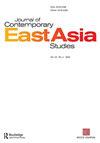The ASEAN Economic Community and ASEAN economic integration
IF 1.4
Q1 AREA STUDIES
引用次数: 27
Abstract
ABSTRACT ASEAN realized the ASEAN Economic Community (AEC) at the end of 2015. The AEC is an economic integration whose goals are free movement of goods, services, investment, and skilled workers, and freer movement of capital. Following the establishment of the ASEAN Free Trade Area (AFTA), ASEAN deepened its economic integration through the AEC. Evaluations of ASEAN’s economic integration are mixed. While highly praised for its steady integration progress, there are also assessments suggesting there is little progress in integration. This study examines the AEC’s economic integration and evaluates ASEAN economic integration, including the AFTA. The AEC is an “FTA-plus” economic integration, and its target and level of market integration are similar to those of the Economic Partnership Agreement. The AEC’s greatest achievement is using tariff elimination to realize a free trade area with a high level of trade liberalization. Liberalizing trade in services, eliminating non-tariff barriers, and facilitating trade have been delayed and have become issues for AEC2025. AEC2025 aims to participate in the global value chain, and its measure is the attraction of foreign direct investment. Although ASEAN’s economic integration has various issues, as a whole, it can be evaluated as successful because of its implementation of flexible liberalization over time. ASEAN’s economic integration is a successful example of economic integration by developing countries; other developing countries can learn lessons from ASEAN’s experiences.东盟经济共同体与东盟经济一体化
摘要东盟于2015年底成立东盟经济共同体。AEC是一种经济一体化,其目标是商品、服务、投资和技术工人的自由流动,以及资本的自由流动。东盟自由贸易区成立后,东盟通过东盟经济共同体深化了经济一体化。对东盟经济一体化的评价好坏参半。尽管其稳步的一体化进展受到高度赞扬,但也有评估表明,一体化进展甚微。本研究考察了东盟经济共同体的经济一体化,并评估了包括东盟自由贸易区在内的东盟经济一体化。AEC是“自由贸易协定+”的经济一体化,其市场一体化的目标和水平与《经济伙伴关系协定》类似。AEC最大的成就是利用取消关税来实现贸易自由化程度高的自由贸易区。服务贸易自由化、消除非关税壁垒和促进贸易已被推迟,并已成为AEC2025的问题。AEC2025旨在参与全球价值链,其措施是吸引外国直接投资。尽管东盟的经济一体化有各种各样的问题,但作为一个整体,它可以被评价为成功,因为它随着时间的推移实施了灵活的自由化。东盟经济一体化是发展中国家经济一体化的成功范例;其他发展中国家可以从东盟的经验中吸取教训。
本文章由计算机程序翻译,如有差异,请以英文原文为准。
求助全文
约1分钟内获得全文
求助全文
来源期刊

Journal of Contemporary East Asia Studies
Social Sciences-Cultural Studies
CiteScore
2.50
自引率
0.00%
发文量
10
审稿时长
6 weeks
 求助内容:
求助内容: 应助结果提醒方式:
应助结果提醒方式:


